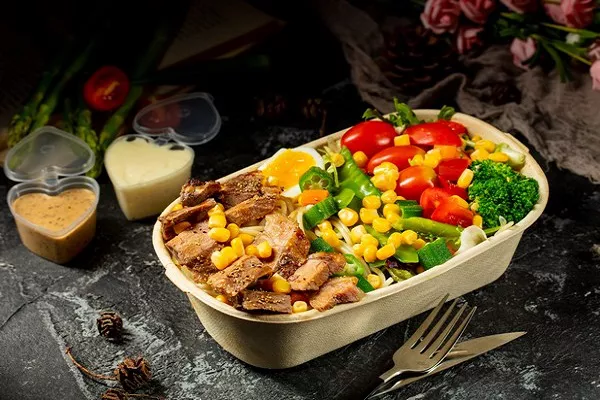Finding foods that are high in calories but low in carbohydrates can be important for various dietary goals, such as gaining weight or maintaining energy levels without increasing blood sugar. This article provides an extensive guide on high-calorie, low-carb foods, covering various categories and providing tips on how to incorporate them into your diet.
Understanding Caloric Density and Carbohydrates
Before diving into specific food recommendations, it’s essential to understand the concepts of caloric density and carbohydrates:
Caloric Density: Refers to the number of calories a food contains relative to its weight or volume. Foods high in caloric density can provide a lot of energy in smaller portions.
Carbohydrates: One of the three macronutrients (along with protein and fat) that provide energy. Carbohydrates are found in sugars, starches, and fibers.
For individuals looking to manage carbohydrate intake, focusing on foods that are rich in fats and proteins is typically the best approach.
High-Calorie, Low-Carb Foods
Nuts and Seeds
Nuts and seeds are excellent sources of healthy fats, protein, and essential nutrients. They are also high in calories and low in carbohydrates.
Examples:
Macadamia Nuts: High in healthy fats and low in carbs, with around 204 calories and only 4 grams of carbs per ounce.
Pecans: Approximately 196 calories and 4 grams of carbs per ounce.
Chia Seeds: Offer about 138 calories and 12 grams of carbs per ounce (most of which is fiber).
Oils and Fats
Oils and fats are the most calorie-dense foods available, providing about 9 calories per gram. They contain no carbohydrates.
Examples:
Olive Oil: Contains 119 calories per tablespoon and zero carbs.
Coconut Oil: Has 121 calories per tablespoon and zero carbs.
Butter: Provides 102 calories per tablespoon and zero carbs.
Fatty Fish
Fatty fish are rich in omega-3 fatty acids and protein, making them both high-calorie and low-carb.
Examples:
Salmon: About 206 calories and zero carbs per 3.5 ounces (100 grams).
Mackerel: Approximately 205 calories and zero carbs per 3.5 ounces (100 grams).
Sardines: Around 208 calories and zero carbs per 3.5 ounces (100 grams).
Meat and Poultry
Meat and poultry are primary sources of protein and fat, with minimal to no carbohydrates.
Examples:
Beef (ribeye steak): Roughly 291 calories and zero carbs per 3.5 ounces (100 grams).
Chicken Thighs: About 209 calories and zero carbs per 3.5 ounces (100 grams).
Pork Belly: Approximately 518 calories and zero carbs per 3.5 ounces (100 grams).
Dairy Products
Certain dairy products can be high in calories and low in carbohydrates, especially those with higher fat content.
Examples:
Heavy Cream: Contains 52 calories and less than 1 gram of carbs per tablespoon.
Cheese (e.g., Cheddar): About 113 calories and less than 1 gram of carbs per ounce.
Greek Yogurt (full-fat): Approximately 190 calories and 7 grams of carbs per 6-ounce serving.
Avocados
Avocados are a unique fruit that is high in healthy fats and calories but low in carbohydrates.
Example:
Avocado: Contains about 234 calories and 12 grams of carbs per avocado (most of which is fiber).
Incorporating High-Calorie, Low-Carb Foods into Your Diet
Breakfast Ideas
Avocado and Egg: Slice an avocado and top it with a poached or fried egg. Sprinkle with salt, pepper, and chili flakes.
Greek Yogurt with Nuts: Mix full-fat Greek yogurt with a handful of nuts like macadamia or pecans.
Lunch Options
Salmon Salad: Make a salad with mixed greens, avocado, and grilled salmon. Drizzle with olive oil and lemon juice.
Chicken Thighs: Grill chicken thighs with herbs and serve with a side of steamed vegetables.
Dinner Suggestions
Beef Ribeye: Grill a ribeye steak and serve with sautéed mushrooms and a side salad with a creamy dressing.
Pork Belly: Slow-cook pork belly and pair it with roasted Brussels sprouts.
Snacks
Cheese and Nuts: Pair a few slices of cheese with a handful of nuts.
Olives and Avocado: Enjoy a mix of olives and avocado slices as a high-fat, low-carb snack.
See Also: What Fruits And Vegetables Help Burn Belly Fat
Benefits of High-Calorie, Low-Carb Diet
Weight Management
Consuming high-calorie, low-carb foods can help with weight management by providing energy without the blood sugar spikes associated with high-carb foods.
Sustained Energy Levels
Fats and proteins provide more sustained energy compared to carbohydrates, which can prevent energy crashes.
Enhanced Nutrient Intake
Many high-calorie, low-carb foods are also nutrient-dense, providing essential vitamins and minerals that support overall health.
Tips for Success
Monitor Portion Sizes
While these foods are high in calories, it’s still essential to monitor portion sizes to avoid excessive calorie intake.
Balance Your Diet
Incorporate a variety of high-calorie, low-carb foods to ensure a balanced intake of nutrients.
Stay Hydrated
Drink plenty of water, as a high-fat diet can sometimes lead to dehydration.
Consult a Professional
Consider consulting with a healthcare professional or a nutritionist to ensure your diet meets your individual health needs.
Potential Challenges
Digestive Issues
High-fat foods can sometimes cause digestive issues, so it’s important to introduce them gradually and monitor how your body responds.
Nutrient Deficiencies
Relying too heavily on high-fat foods can lead to deficiencies in other essential nutrients. Ensure a well-rounded diet.
Social and Cultural Factors
High-calorie, low-carb diets might be challenging to maintain in social situations or within certain cultural contexts. Plan ahead for social events.
Conclusion
High-calorie, low-carb foods can be a beneficial addition to your diet, providing sustained energy, aiding in weight management, and enhancing nutrient intake. By incorporating a variety of these foods into your meals and snacks, you can enjoy a balanced and satisfying diet that aligns with your health goals. Always consider consulting with a healthcare professional to tailor your diet to your specific needs and circumstances.


